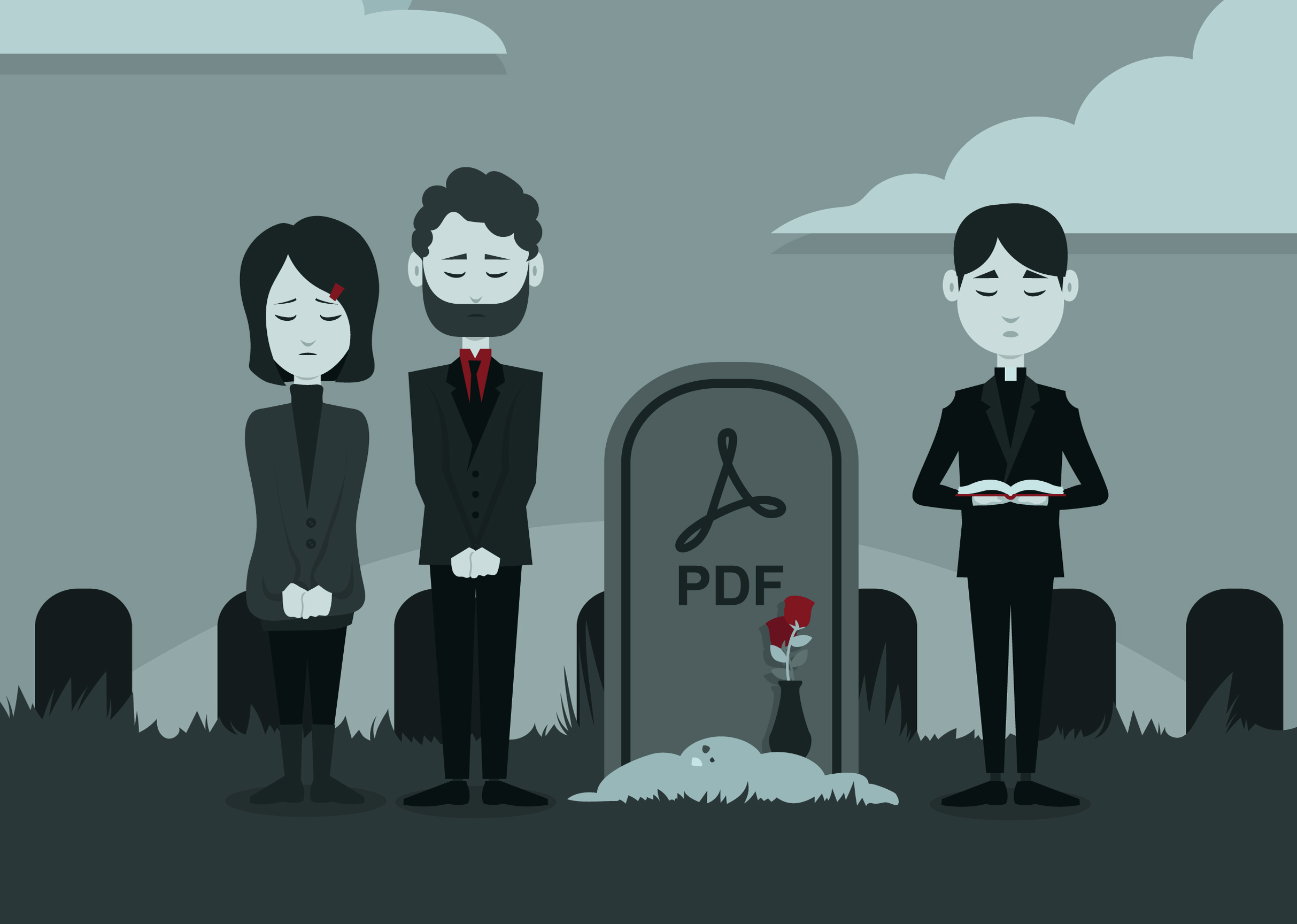 The great Bob Dylan once wrote, “The times they are a-changin”. These words very much reverberate around the current situation that the once supreme PDF finds itself in. In an ever-changing world and a quickly evolving society, can we now say that this is in fact, the final roll call for the PDF? With the introduction of digital storytelling platforms along with high speed internet, the evidence seems to certainly point firmly in that direction. The PDF now finds itself no longer top of the content food chain and the road ahead for it seems very bleak.
The great Bob Dylan once wrote, “The times they are a-changin”. These words very much reverberate around the current situation that the once supreme PDF finds itself in. In an ever-changing world and a quickly evolving society, can we now say that this is in fact, the final roll call for the PDF? With the introduction of digital storytelling platforms along with high speed internet, the evidence seems to certainly point firmly in that direction. The PDF now finds itself no longer top of the content food chain and the road ahead for it seems very bleak.
Why have PDFs been so popular?
For the majority of us, the PDF has been with us ever since we started using a computer and the thought of it not being around seems a tad despairing if anything. This once reliable content format has had remarkable long-term success, ever since it was launched to the public way back in 1993.
No matter what document type was created, from contracts, reports, letterheads, etc.. the PDF was how they were all outputted. Those that were producing the material knew that the PDF would display their content exactly how they wanted it to look. It gave them a sense of trust. For nearly three decades, this was the tried and tested method of exporting content to consumers.
Why the decline?
The first stepping stone in its decline was one that the PDF probably did not see as a threat initially. With the global financial crisis in 2008, many printers were desperately trying to reduce costs. This resulted in the termination of so many print publications. The influx of online digital flipbook solutions such as Issuu and Flipbooks, allowed the printers to simply import their PDFs into software and the result was an impressive online flipbook that behaved like a real publication. To the PDF, this was business as usual, or so it thought. With the decline in print publications, came a bigger threat for the PDF. No longer were designers bound to the stringent rules of print design, agencies wanted their content to be “outside the box”. The Flipbook, it seemed, was only a temporary solution to the lifespan of the PDF.
While there were always some small, but accepted problems with the use of PDFs, its biggest flaw was eventually exposed with the introduction of the Smartphone. With the slow loading of the PDF combined with the clunkiness of pinch to zoom and forever panning around the page, it was the first significant blow to the mighty PDF. The PDF still somehow managed to maintain its premier status over the first few years of the Smartphone era. This was however, due to there being no other alternatives. Not anymore though!
The new sheriff in town
With the introduction of the Smartphone, the need for change in terms of content creation was very evident. Enter companies such as Ceros, Experios and Foleon. These companies could see that the consumer now needed more than just static content. It was then that the term ‘Content Experience’ was born. These platforms allowed companies to create engaging and interactive content. The end user marveled at this new and exciting way to absorb information. Not only was the experience thought-provoking and tailored to their needs, but the content reshaped to fit the device in which they viewed it on. Something the PDF could only ever dream of doing. The platforms empowered companies to create interactive content of which the consumer had never seen the likes of before and in turn drove customer engagement to new levels. Step aside PDF!
So is it curtains for the PDF?
Personally, I do not think so. While they may not be used as prominently over the years to come, they will still be there, lurking in the shadows. It took years for Adobe Flash to be phased out completely. The PDF is a much bigger fish than Flash ever was though. It is secure and reliable. It is used by printers for hand-held printed material. Coupled with the fact that there are thousands of government related organizations that still, to this day, publish PDFs for internal and external use, means that they are not going anywhere anytime soon. In fact, they may always be with us.
About Experios
Experios is 3D Issue’s all new Content Experience platform that allows you to build both internal communications and external content easily while implementing your company branding. You can create annual reports, newsletters and brochures for your employees as well as your customers.. You can get started with Experios for free today, schedule a demo to find out how.
–author – Colin Farrell







